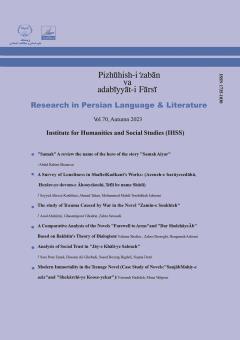Among the mythological, heroic, and historic stories in Shahnameh, the heroic ones are of better ground and more fascinating perspectives for study than the others. Isolation of heroic function from the functions of mythological-king-hero character and its appearance in
More
Among the mythological, heroic, and historic stories in Shahnameh, the heroic ones are of better ground and more fascinating perspectives for study than the others. Isolation of heroic function from the functions of mythological-king-hero character and its appearance in a particular character named hero, with his own actions and feelings that are increasingly similar to a common human behaviors and emotions on one hand, and Ferdowsi’s (the poet’s) tendency to investigate and interpret the hero’s internal motivations facing epical events, on the other hand, have made the characterization aspect of the work deeper and more elaborate, and also promoted the structure of the story from a mere heroic narration to a dramatic structure with its embodiment potential, that latter effect is more prominent in some of the heroic stories. The study of dramatic aspects of these stories, in addition to understanding the dramatic potentials, helps their typology be more methodological and exact. This article, selecting one of the most well known heroic stories of Shahnameh, i.e. Rustam and Sohrab story, and through an introductory emphasis on the originality of its Iranian version, compared with the non-Iranian ones, attempts to investigate its dramatic aspects based upon Aristotle’s Poetica, as the most ancient and, at the same time, credible thesis on recognizing drama and its mechanism in the context of the classic verse and prose works; and presents its own results.
Manuscript profile


